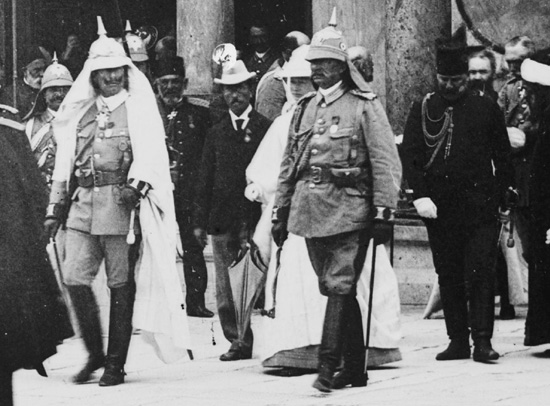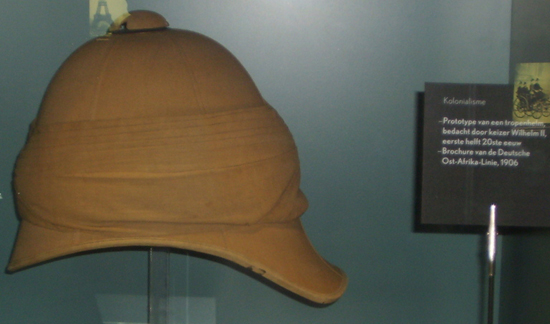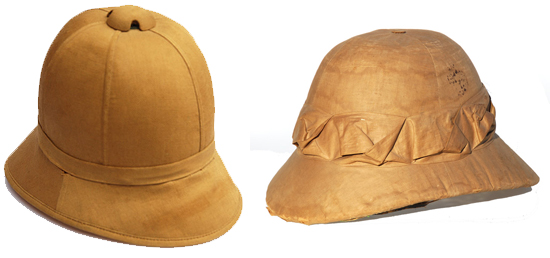 The 25th annual Military Antiques Xtravaganza (MAX) Show took place in Monroeville, outside of Pittsburgh. This 1,500 table show is one of the two largest shows in North America and attracted dealers from around the world. As with past years there was far too much to see, but here is a recap of the sights of the 2012 MAX Show. Continue reading
The 25th annual Military Antiques Xtravaganza (MAX) Show took place in Monroeville, outside of Pittsburgh. This 1,500 table show is one of the two largest shows in North America and attracted dealers from around the world. As with past years there was far too much to see, but here is a recap of the sights of the 2012 MAX Show. Continue reading
Author Archives: Peter Suciu
The Last Kaiser’s Other Tropical Attire
This author previously noted that the collection of Kaiser Wilhelm II’s private uniforms at Huis Doorn included a mystery helmet that appears to be British; a helmet that he may have never wore in any official capacity. However, the last Kaiser of Germany did in fact wear a bombastic tropical uniform in his visit to Palestine in 1898 (shown above at the Temple Mount in Jerusalem).
While, this doesn’t explain how the apparent British six-panel colonial pattern helmet came to be a part of Willie’s personal items at Doorn, it does show that he was prepared for any occasion, including a visit to the Holy Land in German tropical attire. Continue reading
The Last Kaiser’s Sun Helmet
Kaiser Wilhelm II of Germany was forced into exile at the end of the First World War into the neutral Netherlands. From 1920 until his death in 1941 he lived in the small country estate in Holland known as Huis Doorn, which today is a museum and contains many personal items from the last Kaiser.
Among these items is an interesting helmet – which by all appearances is a British six-panel colonial pattern helmet with typical puggaree cloth wrapping. What makes this helmet particularly unique about this example is that it apparently was “created” by Wilhelm. Continue reading
Pith vs. Cork – Not One and the Same
While the term “pith helmet” is commonly used to describe any sun or summer helmet, it isn’t exactly accurate. Pith has entered the lexicon much as “Xerox” means “photocopy” or “Kleenex” means “facial tissue” – at least in English. The difference is that while some corporate brands have become generic terms, pith is not a brand but a material. Continue reading
Winston in Pith Helmets
Sir Winston Churchill wore many hats in his life. He was a writer, scholar, soldier, politician, painter and above all English gentleman. Winston as he was often known by friend and foe alike was a Victorian soldier of the Queen, a First World War Lord of the Admiralty and, of course, during the Second World War the Prime Minister.
His most famous hat was his Bowker, but he also sported a Homburg hat as often, and as a soldier wore visor caps and in France in World War I a steel helmet. But of course we remember Mr. Churchill in many a sun helmet! Continue reading
The Italian Aden and Indian Pattern Helmet
While it is hard not to see that the Italian Model 1928 helmet was at least highly “influenced” by the British Wolseley helmet, the Italian military also seemed taken by the Anglo-Indian Cawnpore helmet. This particular topee, which is noted for its quilted pattern, was first a popular as a civilian helmet, but soon found its way to the military as a “private purchase” item.
Originally dubbed the Cawnpore Tent Club hat, it was popularized by the Prince of Wales’ visit to India 1875-76. From the First World War to the 1930s the helmet was chosen by fashion thinking British Officers, but in 1938 the Commander-in-Chief India dictated that the Cawnpore Tent Club helmet – along with the Wolseley – were to be phased out in favor of the Khaki Solar Pith Hat (See: Hat, Pith, Khaki, Solar). Continue reading
Straw and Wicker Helmets
This was the standard pattern used by the Afrika Korp. While most of these were made of cork, there are many examples that were apparently made of weaved straw with wicker support. This example, while in bad condition offers an excellent look at the “inside” of the helmet
While sola pith and cork are among the most commonly used materials in the construction of sun helmets, straw weave and wicker were used at times as an ersatz material, especially in wartime. We previously noted two examples of British-made Wolseley straw helmets in the collection of Stuart Bates. While these are the only two known surviving examples of British straw helmets of this pattern, there are many surviving examples of straw helmets from other countries.
How many of these helmets were produced remains a mystery, but surviving examples given an indication that serious craftsmanship went into their construction. Continue reading






